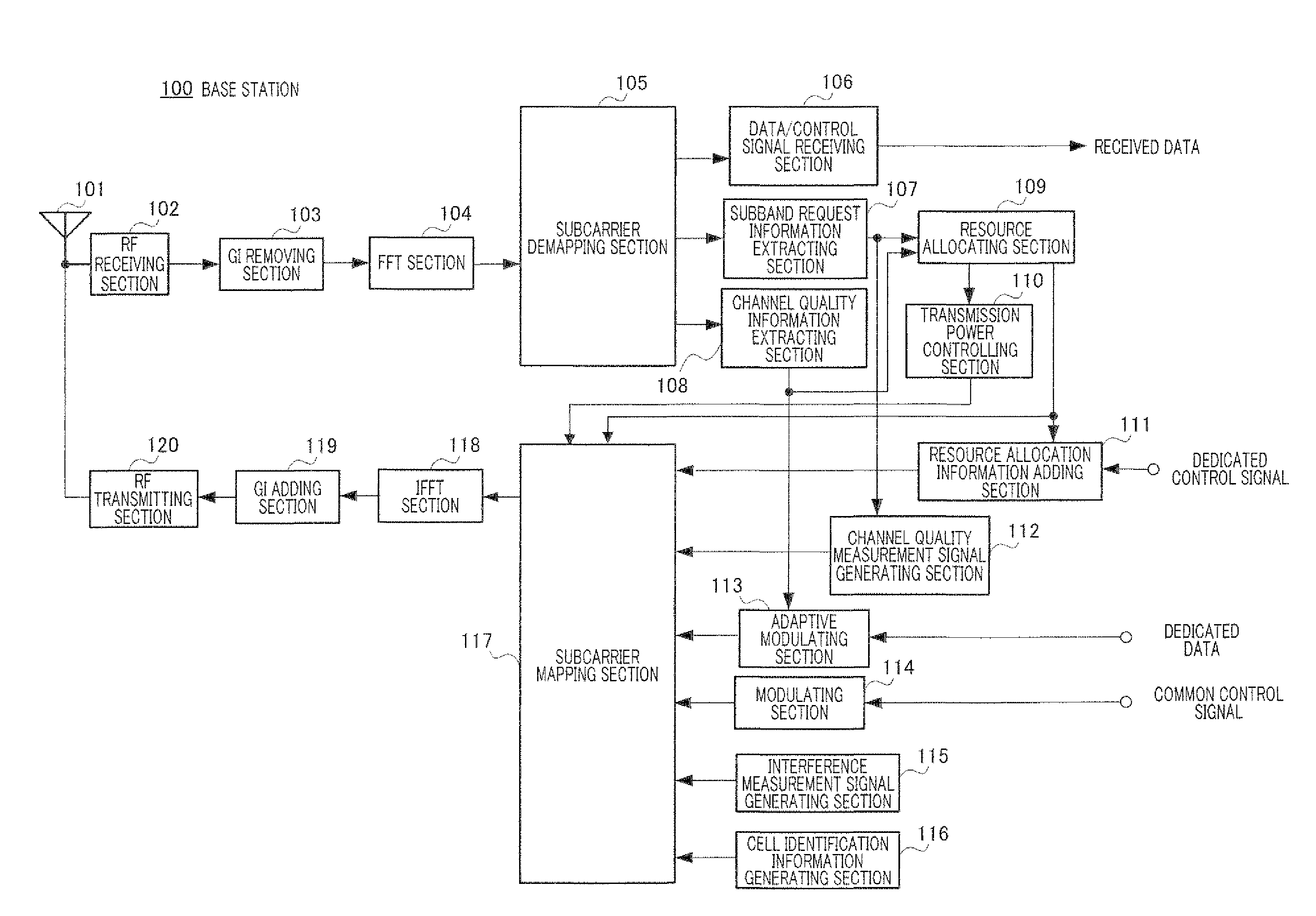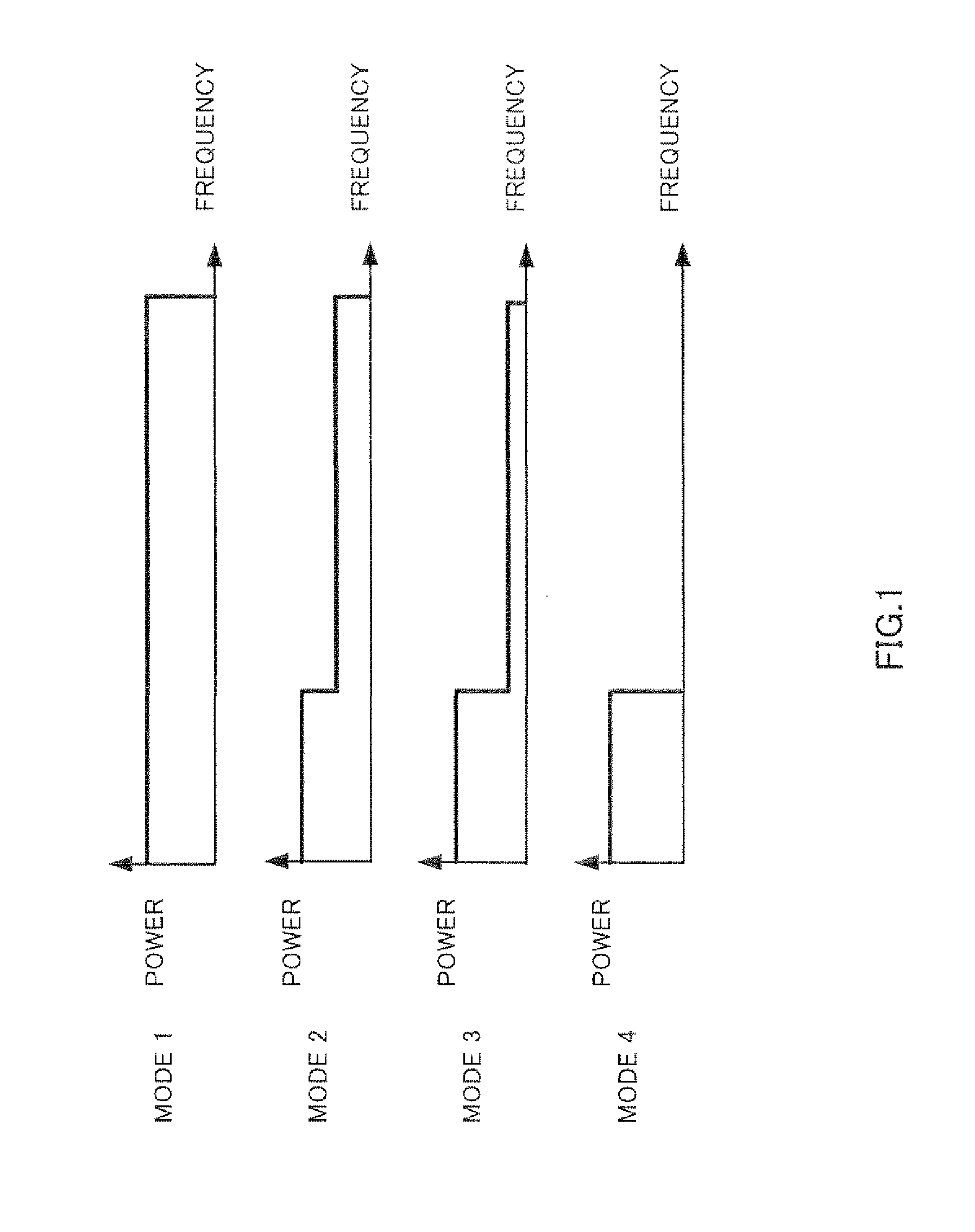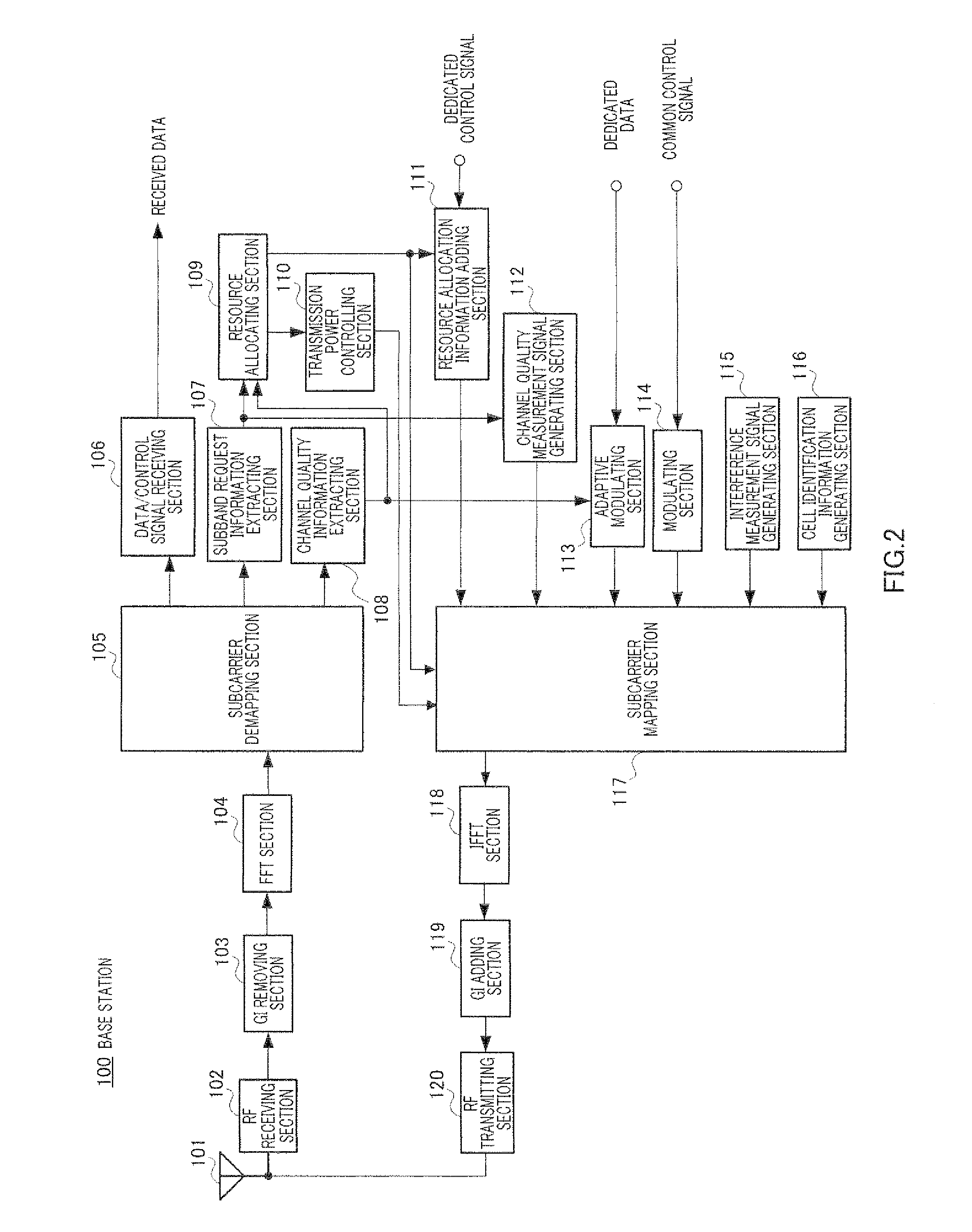Terminal device, base station device, and frequency resource allocation method
a technology of frequency resource allocation and base station, which is applied in the direction of frequency-division multiplex, transmission monitoring, wireless commuication services, etc., can solve the problems of decreasing throughput and achieve the effect of reducing overhead
- Summary
- Abstract
- Description
- Claims
- Application Information
AI Technical Summary
Benefits of technology
Problems solved by technology
Method used
Image
Examples
embodiment 1
(1) Configuration
[0070]First, the configurations of a base station apparatus (hereinafter simply “base station”) and a terminal apparatus (hereinafter simply “terminal”) according to the present embodiment will be explained. Note that a case will be explained with the present embodiment as an example where an OFDMA scheme is used as an access method.
[0071]FIG. 2 shows the configuration of the base station. Base station 100 inputs a signal received at antenna 101, to RF (Radio Frequency) receiving section 102. RF receiving section 102 performs predetermined radio processing such as amplification processing and down-conversion processing of the received signal. GI (Guard Interval) removing section 103 removes a guard interval from the received signal subjected to radio processing, and FFT section 104 transforms the time domain signal into a frequency domain signal. By this means, a signal of each subcarrier is reproduced.
[0072]Subcarrier demapping section 105 sorts a signal mapped on ...
embodiment 2
[0157]With the present embodiment, another method of selecting subband indices (“SBIs”) in a terminal will be explained. Although, with Embodiment 1, relative positions of subbands are determined according to the interference state (D / U) in step 1 of selecting subbands, selection is performed in step 1 of the present embodiment in a different way from Embodiment 1.
[0158]With the present embodiment, the subband selecting section of terminal 200 selects a subband by executing roughly following two steps.
[0159]Step 1: Determine Relative Positions of Subbands
[0160]Based on an inter-cell interference state (D / U) calculated from the output of the interference state detecting section and information about a cell identifier outputted from the cell identifying section, the relative positions of subbands are determined.
[0161]To be more specific, first, based on the inter-cell interference state (D / U) calculated from the output of the interference state detecting section, the absolute value |f...
embodiment 3
[0173]With the present embodiment, a subband control method that is suitably applied to a mobile communication system including terminals of low capability will be explained.
[0174]The next-generation mobile communication system allows high speed data communication exceeding 100 Mbps by widening an operating frequency bandwidth. In this case, taking into account cost requirement, power consumption requirement and backward compatibility requirement of terminals, it is assumed that terminals having different levels of reception capability (i.e. modulation schemes that can be supported, coding schemes, the maximum bandwidth that can be received and the maximum bandwidth that can be transmitted) are provided depending on use of terminals without equipping all terminals with the functions of full specifications. Therefore, the next-generation mobile communication system must efficiently accommodate terminals having various levels of reception capability.
[0175]The present embodiment presen...
PUM
 Login to View More
Login to View More Abstract
Description
Claims
Application Information
 Login to View More
Login to View More - R&D
- Intellectual Property
- Life Sciences
- Materials
- Tech Scout
- Unparalleled Data Quality
- Higher Quality Content
- 60% Fewer Hallucinations
Browse by: Latest US Patents, China's latest patents, Technical Efficacy Thesaurus, Application Domain, Technology Topic, Popular Technical Reports.
© 2025 PatSnap. All rights reserved.Legal|Privacy policy|Modern Slavery Act Transparency Statement|Sitemap|About US| Contact US: help@patsnap.com



